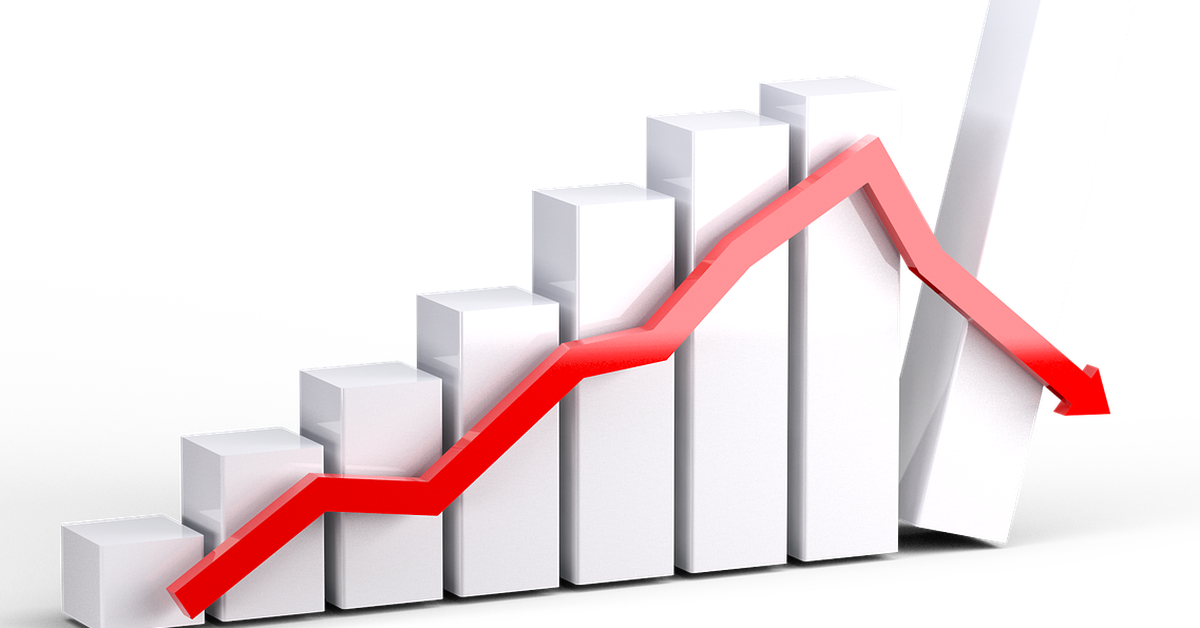crypto renaissance | Ethereum Foundation Blog

“The best way to predict the future is to invent it.” Alan Kay
January 3rd 2009 marked the beginning of a new era. The invention of the blockchain is a milestone in technology — the string of characters 36PrZ1KHYMpqSyAQXSG8VwbUiq2EogxLo2 being just one of the side effects triggered by it. Thanks to you and this technology, more than thirty one thousand bitcoins will go towards spawning an entire new digital realm. The unfettered peer to peer world wide digital finance grid is building itself out. You make this possible.
More than 5000 years ago, the earliest economic systems were introduced in Mesopotamia, setting the foundations of modern society. As a word, Mesopotamia, originates from ancient Greek and stands for “(land) between the rivers”. As a civilization, one of their greatest achievements was the introduction of the so called cuneiform script. This marked the beginning of the information revolution within human society.
Unlike Ethereum code, this invention consisted in wedge-shaped marks on clay tablets, made with a blunt reed. As rudimentary as this might sound today, this invention gave birth to concepts and solutions previously unheard of in a variety of areas such as accounting and legal contracts. The introduction of this new method for storing and distributing information and wealth made Mesopotamia one of the largest and most thriving civilizations of its era.
The unintended side-effects of this invention have led to our current information age society. Before arriving to our modern information systems, our civilization went through three major recent information revolutions:
- Printing press
- Telecoms
- Internet
Traces of these information revolutions can be seen everywhere from health to manufacturing sectors, all pointing towards a decentralized, interconnected future.
Now, the crypto information revolution is underway. The centralized economy paradigm society created thousands of years ago was a successful social experiment that has ultimately led humanity here, but now we have reached a point where we can cross the river. The currently available technologies provide us a new advanced toolkit designed for distributing and storing both information and wealth… at light speed.
This is crypto renaissance in full swing.
the (collaborative) information age
“If you look at history, innovation doesn’t come just from giving people incentives; it comes from creating environments where their ideas can connect.” Steven Johnson
Around the 14th century, the second huge information revolution was brewing thanks to Johannes Gutenberg’s invention of the printing press. Unlike its predecessors, this invention included moveable type faces enabling efficient and affordable printing production. By opening information dissemination on a larger scale and breadth than ever before, this invention fostered a new culture which created new opportunities for intellectual and societal growth.
It appears that each time a new information technology becomes available, a number of patterns start to emerge. As a thought experiment, if we would overlap today’s technological renaissance with the 14th-17th century renaissance we would observe the following:
- Introduced a new method for storing and distributing information in society
- Period marked by important technical achievements allowing a faster propagation of ideas
- Ignited experimentation and an intellectual revitalization
- Triggered paradigm shifts deepening our understanding of the world, ourselves and the universe
- Resulted in social, political and economic transformations
If we draw the parallels we can see how information technologies enable positive growth within society since Mesopotamian ages. It furthers progress in most fields by creating accessible mediums of information and that lead to a participatory culture with lesser or without social limitations.

In the 20th and 21st century, humanity as a whole accelerated immensely. The first big step towards creating a new medium for information that propelled our society into the information age was the invention of the microchip. This technology made general computing possible. Later on, the Internet emerged as a global system of interconnected computer networks that use a standard protocol suite (TCP/IP) to link billions of devices worldwide.
Today, the Internet is an international mesh network connecting more than two billion people allowing the free* flow of information, wealth and services to be exchanged without boundaries. This has set the stage for an explosion of interesting new concepts to materialize.
The ripples caused by this information revolution can be felt throughout the fabric of our society as storms of bits eroding the pillars of a centralized paradigm. The Internet is one of the most powerful social experiments ever invented.
From a collaborative perspective, the Internet and technology in general became a creation catalyst, exponentially increasing our collaborative potential. Furthermore, the cost of coordination and collaboration was reduced drastically by making all participants with Internet access universally available and connected.
This allowed us as humans to transcend time and space limitations — keystroke by keystroke.
emerging patterns: free culture and open movements
 Twitter Network Vizualized
Twitter Network Vizualized
“In real open source, you have the right to control your own destiny.” Linus Torvalds
Started around the 1970s, the earliest form of free software cultural movement has been ignited by Richard Stallman and his peers through their work tackling access and dissemination of information in this new technological realm.
As digital freedom culture ideals spread across this new information grid the number of free software initiatives grew and evolved in different ways from encryption algorithms to operating systems to blockchain technologies.
Many established scholars of innovation did not anticipate the emergence of a distributed and open model for innovation that can aggressively compete with traditionally closed and proprietary models. Looking back, who could have expected that swarms of online individuals acting without monetary incentive would build through distributed ad-hoc processes the largest encyclopedic body of knowledge in human history, or one of Microsoft’s most aggressive competitors?
In this line of thinking, open source can be seen as a pattern of collaboration in itself, being part of a bigger pattern: open collaboration. According to Wikipedia, open collaboration is described as “any system of innovation or production that relies on goal-oriented yet loosely coordinated participants, who interact to create a product (or service) of economic value, which they make available to contributors and non-contributors alike”.
Open collaboration appears as a pattern in many areas of our lives and represents one of the underlying principles behind many great achievements on the Internet.
Wikipedia and Linux are perfect examples of open cultures of knowledge advancing, edit by edit. Their existence stands as a monument depicting the collaborative power of loosely associated groups, challenging and transcending centralized architectures.
Open source continues to fascinate many economists, sociologists, scientists and many others thanks to its collaborative ability to defy economic dogmas based on top-down closed-control principles. These communities thrive thanks to decentralized problem solving, self-selected participation and self organization resulting in open collaboration. The emergence of these organizational models and sheer numbers of participants, in the hundreds of thousands, raised the question of motivation: “Why do these people work and participate for ‘free’?”
The common view of purely self-interested participants, is clearly not the answer when many participate with no promise of a direct financial reward for their efforts. If writing code, designing decentralized software architectures, and solving tough cryptographic problems are construed by outsiders to be unremunerated blood, sweat, and tears, the contributors themselves are more likely to insist that the work is a source of significant satisfaction that derives from the pure joy of engagement in the work, or with the group or community, or both.
The answer seems to lie in a more expansive view of ourselves as human beings that acknowledges, as well as the role of economic motivations, notions of enjoyment and having fun together with identity and the social benefits of community. Challenge, enjoyment, and creativity are hallmarks of participation in this paradigm.
Through their work and actions these open source communities, reveal macro homo reciprocan patterns. These patterns are valuable because they can offer insights into why things work this way or more precisely in this case “how do we work this way and what can we learn from it”.
When you start considering the possibility that our species might actually be a collaborative rather than competitive one you’re faced with a number of beliefs deeply encroached in our current society and world view.
The current world wide accepted assumption is that our race appears to be composed of selfish individuals homo economicus, however this theory is challenged by billions of lines of running code and millions of individuals working together for free.
ethereum project as a distributed innovation network

“If you really want to innovate, it seems that decentralization generates experimentation. You want to discover what works and what doesn’t.” Nicholas Bloom
Open source communities represent the most radical edge of openness and sharing observed to date in complex technology development. The ethos of sharing and modification extends beyond code to the actual technology development process in the sense that community members engage in joint problem solving via open sharing of ideas and ongoing interaction. We can witness this behavior in our etherean community as well, with people swarming around common interests and values.
Adopting a monolith organizational structure was clearly not an optimal solution for this project as classic centralized organizations usually move and adapt, if they do, at glacier speed compared to these agile swarms of individuals.
This is how our pursuit for a decentralized organizational structure, which creates favorable conditions for innovation and experimentation began. The core ideas behind distributed innovation appeared to fit best our needs.
Distributed innovation systems are designed from the ground up to lower the cost of participation for contributors. Why is that important? Firstly, because nurturing growth at the edges was always an important thought for us. And secondly, by reducing or eliminating barriers to entry you expand the population that can self-select into the community.

The above diagram depicts the structure of the project in the context of multiple autonomous entities collaborating on different initiatives. In the collaboration process experimentation and co-experimentation are encouraged, hopefully sparking a wave of technologies and innovations that can be generally described as world positive.
This creates a novel ecosystem for knowledge creation and presents both challenges and opportunities. On the upside it is compatible with the DAO framework that we’re seeking to implement in the near future. On the downside it’s an experiment in itself might not go too well. In a true open source fashion, feedback, suggestions and improvements are welcome.
To summarize, many industries and institutions that are deeply entrenched within our society will most likely undergo significant changes in the coming years. Most probably we will also undergo significant changes but if anything, when we look at the the bigger picture, it appears that man’s capacity for self-transformation is the only constant in our history.
almost nothing has been invented yet
(caption id=”attachment_929″ align=”aligncenter” width=”2000″) Thomas Kuhn used the duck-rabbit optical illusion to demonstrate the way in which a paradigm
Thomas Kuhn used the duck-rabbit optical illusion to demonstrate the way in which a paradigm
shift could cause one to see the same information in an entirely different way.(/caption)
Man on the Train: Hey, are you a dreamer?
The Dreamer: Yeah.
Man on the Train: Haven’t seen too many of you around lately. Things have been tough lately for dreamers. They say dreaming is dead, no one does it anymore. It’s not dead it’s just that it’s been forgotten, removed from our language. Nobody teaches it so nobody knows it exists. And the dreamer is banished to obscurity. Well, I’m trying to change all that, and I hope you are too. By dreaming, every day. Dreaming with our hands and dreaming with our minds. Our planet is facing the greatest problems it’s ever faced, ever. So whatever you do, don’t be bored. This is absolutely the most exciting time we could have possibly hoped to be alive. And things are just starting.
— Waking Life
“Everything that can be invented has been invented” is a quote attributed to former U.S. Patent Office Director, Charles H. Duell. Supposedly this was said during the 18 century when the traditional road to innovation was paved in secrecy and emphasized the accumulation of patents and intellectual property.
Today, thanks to countless open innovations we appear to be (very) far from having invented everything. We are only scratching the surface – the more we invent, the more others can expand upon those ideas. We are standing on the shoulders of taller and taller giants accelerating in their growth.
At the same time, during this period of rapid acceleration it is starting to become much clearer that if we are to survive as a species we need to learn to work together. The divide and conquer era is approaching its end. The united and empowered era is shining its light through millions of open minds co-architecting the next societal operating system.
We learned from the first renaissance that technology enables a positive growth within society, through accessible mediums of information encouraging a participatory culture devoid of social limitations. The Internet gave humanity a worldwide renaissance coffee shop where people with very different skills and areas of knowledge can bump into each other and exchange ideas.
Blockchain technologies offer us now a new medium for information storage and distribution. A fractal of opportunities is opening in front of our minds. The technology, knowledge and world-wide community support required to transcend century old paradigms moving closer towards a free, open and non-proprietary world are now within reach.
This is definitely the most exciting time we could have hoped to be alive.
And things are just starting.


